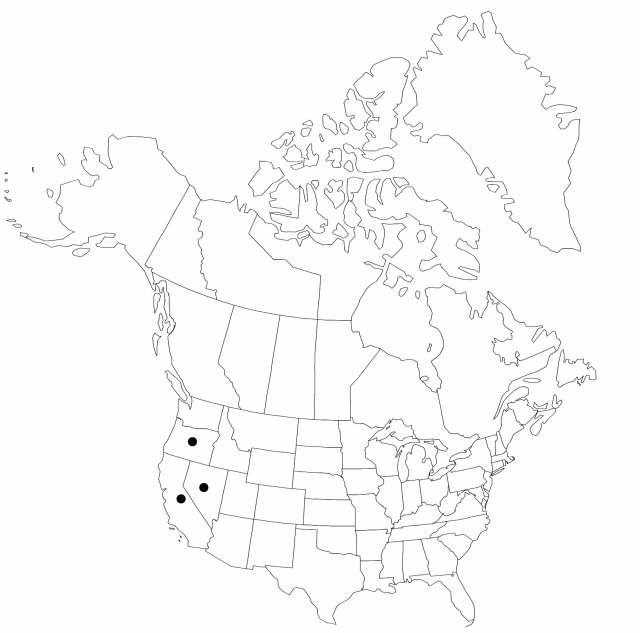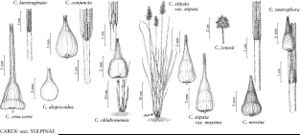Carex nervina
Bot. Gaz. 10: 203, plate 3, figs. 6–8. 1885.
Plants with basal and proximal sheaths red-papillose, those of previous year not persistent. Culms to 70 cm × 1.5 mm, scabrous. Leaves: sheaths usually all with blades, proximal 2–3 to 10 cm with reduced blades, green, fronts of proximal sheaths herbaceous, prominently veined, not splitting, apex truncate, fronts of distal sheaths hyaline, indistinctly veined with linear veins, smooth, apex colorless, thickened concave, entire; ligules obtuse, 1.5 mm, free limb to 0.5 mm; blades not clustered at base, not epistomic, to 60 cm × 5 mm. Inflorescences very condensed, ovoid, with 5–10 individually indistinguishable branches, 2.5 × 1.5 cm; proximal internode not visible, not more than 3 mm; proximal bracts scalelike, inconspicuous. Scales hyaline, brown, subequal to perigynia, acute. Perigynia pale brown, 15-veined abaxially, 7–12-veined adaxially, to 4.5 × 2 mm, base distended only slightly proximally, cordate; stipe to 0.2 mm; beak to 2 mm, smooth or subserrulate, apical teeth to 0.3 mm. Achenes ovate, to 2 × 1.5 mm; stalk to 0.2 mm; persistent style base cylindric.
Phenology: Fruiting Jul–Aug.
Habitat: Subalpine meadows
Elevation: 1200–3000 m
Distribution

Calif., Nev., Oreg.
Discussion
Carex nervina and C. neurophora share distinctive proximal sheaths, which are elongate (to 15 cm) and longer than their blades, do not split with age, truncate at the apex, prominently veined, and green. These taxa may be distinguished by vegetative characters of the distal leaf sheaths, which are smooth with a hyaline convex apex in C. neurophora and rugose with a cartilaginous concave apex in C. nervina. Perigynia characters also distinguish the taxa; C. nervina has a greater number of veins and a glabrous beak. The parapatric distribution and shared sheath characteristics indicate that these species may be recently derived from a common ancestor.
Selected References
None.
